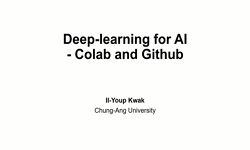Objective: To provide an automatic method for segmentation and diameter measurement of type B aortic dissection (TBAD). Materials and Methods: Aortic computed tomography angiographic images from 139 patients with TBAD were consecutively collected. We ...
http://chineseinput.net/에서 pinyin(병음)방식으로 중국어를 변환할 수 있습니다.
변환된 중국어를 복사하여 사용하시면 됩니다.
- 中文 을 입력하시려면 zhongwen을 입력하시고 space를누르시면됩니다.
- 北京 을 입력하시려면 beijing을 입력하시고 space를 누르시면 됩니다.



A Three-Dimensional Deep Convolutional Neural Network for Automatic Segmentation and Diameter Measurement of Type B Aortic Dissection
한글로보기https://www.riss.kr/link?id=A107245788
-
저자
Yu Yitong (Department of Radiology, Fuwai Hospital, Peking Union Medical College & Chinese Academy of Medical Sciences; State Key Lab and National Center for Cardiovascular Diseases, Beijng, China.) ; Gao Yang (Department of Radiology, Fuwai Hospital, Peking Union Medical College & Chinese Academy of Medical Sciences; State Key Lab and National Center for Cardiovascular Diseases, Beijng, China.) ; Wei Jianyong (ShuKun (BeiJing) Technology Co., Ltd., Beijing, China.) ; Liao Fangzhou (Institute of Information Engineering, Chinese Academy of Sciences, Beijing, China.) ; Xiao Qianjiang (ShuKun (BeiJing) Technology Co., Ltd., Beijing, China.) ; Zhang Jie (Department of Radiology, Fuwai Hospital, Peking Union Medical College & Chinese Academy of Medical Sciences; State Key Lab and National Center for Cardiovascular Diseases, Beijng, China.) ; Yin Weihua (Department of Radiology, Fuwai Hospital, Peking Union Medical College & Chinese Academy of Medical Sciences; State Key Lab and National Center for Cardiovascular Diseases, Beijng, China.) ; Lu Bin (Department of Radiology, Fuwai Hospital, Peking Union Medical College & Chinese Academy of Medical Sciences; State Key Lab and National Center for Cardiovascular Diseases, Beijng, China.)
- 발행기관
- 학술지명
- 권호사항
-
발행연도
2021
-
작성언어
English
- 주제어
-
등재정보
KCI등재,SCIE,SCOPUS
-
자료형태
학술저널
-
수록면
168-178(11쪽)
-
KCI 피인용횟수
0
- DOI식별코드
- 제공처
-
0
상세조회 -
0
다운로드
부가정보
다국어 초록 (Multilingual Abstract)
Objective: To provide an automatic method for segmentation and diameter measurement of type B aortic dissection (TBAD).
Materials and Methods: Aortic computed tomography angiographic images from 139 patients with TBAD were consecutively collected. We implemented a deep learning method based on a three-dimensional (3D) deep convolutional neural (CNN) network, which realizes automatic segmentation and measurement of the entire aorta (EA), true lumen (TL), and false lumen (FL). The accuracy, stability, and measurement time were compared between deep learning and manual methods. The intra- and inter-observer reproducibility of the manual method was also evaluated.
Results: The mean dice coefficient scores were 0.958, 0.961, and 0.932 for EA, TL, and FL, respectively. There was a linear relationship between the reference standard and measurement by the manual and deep learning method (r = 0.964 and 0.991, respectively). The average measurement error of the deep learning method was less than that of the manual method (EA, 1.64% vs. 4.13%; TL, 2.46% vs. 11.67%; FL, 2.50% vs. 8.02%). Bland-Altman plots revealed that the deviations of the diameters between the deep learning method and the reference standard were -0.042 mm (-3.412 to 3.330 mm), -0.376 mm (-3.328 to 2.577 mm), and 0.026 mm (-3.040 to 3.092 mm) for EA, TL, and FL, respectively. For the manual method, the corresponding deviations were -0.166 mm (-1.419 to 1.086 mm), -0.050 mm (-0.970 to 1.070 mm), and -0.085 mm (-1.010 to 0.084 mm). Intra- and inter-observer differences were found in measurements with the manual method, but not with the deep learning method. The measurement time with the deep learning method was markedly shorter than with the manual method (21.7 ± 1.1 vs. 82.5 ± 16.1 minutes, p < 0.001).
Conclusion: The performance of efficient segmentation and diameter measurement of TBADs based on the 3D deep CNN was both accurate and stable. This method is promising for evaluating aortic morphology automatically and alleviating the workload of radiologists in the near future.
참고문헌 (Reference)
1 Hagan PG, "The International Registry of Acute Aortic Dissection (IRAD): new insights into an old disease" 283 : 897-903, 2000
2 Ben Ayed I, "TRIC: trust region for invariant compactness and its application to abdominal aorta segmentation" 17 (17): 381-388, 2014
3 Behrens T, "Robust segmentation of tubular structures in 3-D medical images by parametric object detection and tracking" 33 : 554-561, 2003
4 Rengier F, "Reliability of semiautomatic centerline analysis versus manual aortic measurement techniques for TEVAR among non-experts" 42 : 324-331, 2011
5 Alom MZ, "Recurrent residual U-Net for medical image segmentation" 6 : 014006-, 2019
6 Wang G, "Machine learning will transform radiology significantly within the next 5 years" 44 : 2041-2044, 2017
7 Tajik AJ, "Machine learning for echocardiographic imaging:embarking on another incredible journey" 68 : 2296-2298, 2016
8 Kaji S, "Long-term prognosis of patients with type B aortic intramural hematoma" 108 (108): II307-II311, 2003
9 Drozdzal M, "Learning normalized inputs for iterative estimation in medical image segmentation" 44 : 1-13, 2018
10 Sternbergh WC 3rd, "Influence of endograft oversizing on device migration, endoleak, aneurysm shrinkage, and aortic neck dilation: results from the Zenith Multicenter Trial" 39 : 20-26, 2004
1 Hagan PG, "The International Registry of Acute Aortic Dissection (IRAD): new insights into an old disease" 283 : 897-903, 2000
2 Ben Ayed I, "TRIC: trust region for invariant compactness and its application to abdominal aorta segmentation" 17 (17): 381-388, 2014
3 Behrens T, "Robust segmentation of tubular structures in 3-D medical images by parametric object detection and tracking" 33 : 554-561, 2003
4 Rengier F, "Reliability of semiautomatic centerline analysis versus manual aortic measurement techniques for TEVAR among non-experts" 42 : 324-331, 2011
5 Alom MZ, "Recurrent residual U-Net for medical image segmentation" 6 : 014006-, 2019
6 Wang G, "Machine learning will transform radiology significantly within the next 5 years" 44 : 2041-2044, 2017
7 Tajik AJ, "Machine learning for echocardiographic imaging:embarking on another incredible journey" 68 : 2296-2298, 2016
8 Kaji S, "Long-term prognosis of patients with type B aortic intramural hematoma" 108 (108): II307-II311, 2003
9 Drozdzal M, "Learning normalized inputs for iterative estimation in medical image segmentation" 44 : 1-13, 2018
10 Sternbergh WC 3rd, "Influence of endograft oversizing on device migration, endoleak, aneurysm shrinkage, and aortic neck dilation: results from the Zenith Multicenter Trial" 39 : 20-26, 2004
11 Novelline RA, "Helical CT in emergency radiology" 213 : 321-339, 1999
12 Li X, "H-DenseUNet:hybrid densely connected UNet for liver and tumor segmentation From CT volumes" 37 : 2663-2674, 2018
13 Cao L, "Fully automatic segmentation of type B aortic dissection from CTA images enabled by deep learning" 121 : 108713-, 2019
14 Rengier F, "Development of in vivo quantitative geometric mapping of the aortic arch for advanced endovascular aortic repair: feasibility and preliminary results" 22 : 980-986, 2011
15 Chartrand G, "Deep learning: a primer for radiologists" 37 : 2113-2131, 2017
16 Sahiner B, "Deep learning in medical imaging and radiation therapy" 46 : e1-e36, 2019
17 이준구, "Deep Learning in Medical Imaging: General Overview" 대한영상의학회 18 (18): 570-584, 2017
18 Pereira S, "Brain tumor segmentation using convolutional neural networks in MRI images" 35 : 1240-1251, 2016
19 Moeskops P, "Automatic segmentation of MR brain images with a convolutional neural network" 35 : 1252-1261, 2016
20 Herment A, "Automated segmentation of the aorta from phase contrast MR images: validation against expert tracing in healthy volunteers and in patients with a dilated aorta" 31 : 881-888, 2010
21 Sedghi Gamechi Z, "Automated 3D segmentation and diameter measurement of the thoracic aorta on non-contrast enhanced CT" 29 : 4613-4623, 2019
22 Sommer T, "Aortic dissection: a comparative study of diagnosis with spiral CT, multiplanar transesophageal echocardiography, and MR imaging" 199 : 347-352, 1996
23 Müller-Eschner M, "Accuracy and variability of semiautomatic centerline analysis versus manual aortic measurement techniques for TEVAR" 45 : 241-247, 2013
24 Tian Y, "A vessel active contour model for vascular segmentation" 2014 : 106490-, 2014
25 Wang G, "A perspective on deep imaging" 4 : 8914-8924, 2016
26 Erbel R, "2014 ESC guidelines on the diagnosis and treatment of aortic diseases: document covering acute and chronic aortic diseases of the thoracic and abdominal aorta of the adult. The Task Force for the Diagnosis and Treatment of Aortic Diseases of the European Society of Cardiology (ESC)" 35 : 2873-2926, 2014
동일학술지(권/호) 다른 논문
-
- 대한영상의학회
- Won So Yeon
- 2021
- KCI등재,SCIE,SCOPUS
-
- 대한영상의학회
- Choi Jae Won
- 2021
- KCI등재,SCIE,SCOPUS
-
- 대한영상의학회
- Yoon Soon Ho
- 2021
- KCI등재,SCIE,SCOPUS
-
- 대한영상의학회
- Hong Eun Kyoung
- 2021
- KCI등재,SCIE,SCOPUS
분석정보
인용정보 인용지수 설명보기
학술지 이력
| 연월일 | 이력구분 | 이력상세 | 등재구분 |
|---|---|---|---|
| 2023 | 평가예정 | 해외DB학술지평가 신청대상 (해외등재 학술지 평가) | |
| 2020-01-01 | 평가 | 등재학술지 유지 (해외등재 학술지 평가) |  |
| 2016-11-15 | 학회명변경 | 영문명 : The Korean Radiological Society -> The Korean Society of Radiology |  |
| 2010-01-01 | 평가 | 등재학술지 유지 (등재유지) |  |
| 2007-01-01 | 평가 | 등재학술지 선정 (등재후보2차) |  |
| 2006-01-01 | 평가 | 등재후보 1차 PASS (등재후보1차) |  |
| 2003-01-01 | 평가 | 등재후보학술지 선정 (신규평가) |  |
학술지 인용정보
| 기준연도 | WOS-KCI 통합IF(2년) | KCIF(2년) | KCIF(3년) |
|---|---|---|---|
| 2016 | 1.61 | 0.46 | 1.15 |
| KCIF(4년) | KCIF(5년) | 중심성지수(3년) | 즉시성지수 |
| 0.93 | 0.84 | 0.494 | 0.06 |




 KCI
KCI






